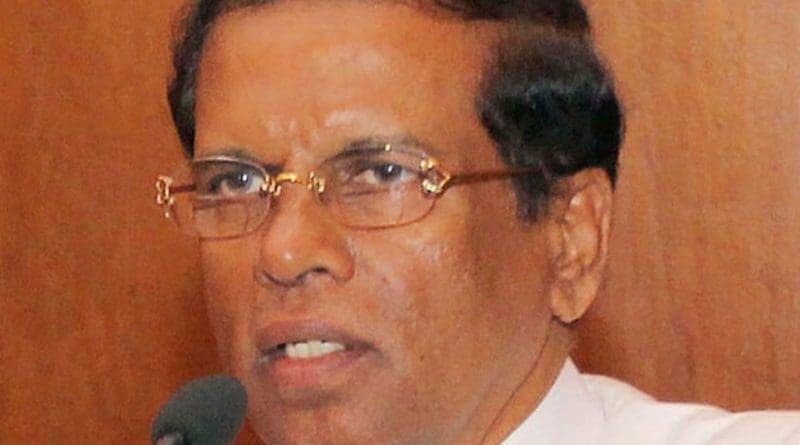Sri Lankan Presidential Election At A Glance – Analysis
By Institute of South Asian Studies
By Saman Kelegama*
The Sri Lankan election result was a stunner to many. An incumbent president has never been defeated before and this was the first time that it happened with the defeat of Mahinda Rajapaksa in the presidential election held on 8 January 2015. Although the margin of the incoming President Maithripala Sirisena’s victory was thin, he managed to make substantial inroads in the majority Sinhala-Buddhist vote base (70% of the population) of Rajapaksa. This, capped by overwhelming support from the minority communities in Sri Lanka (Tamils and Muslims) enabled Sirisena to romp home.
The Sirisena victory is due to a combination of factors: after nine years of Rajapaksa’s rule there was an anti-incumbency factor; portraying Rajapaksa as the war hero (winning the three-decade-long war in North/East Sri Lanka against the Tamil Tigers in 2009) had run out of steam (as this slogan was overplayed during the 2010 polls when Rajapaksa got re-elected for the second time as executive President); nepotism and corruption had proliferated; there was a complete breakdown of rule of law and governance was at the lowest level; there was an increasing tendency towards authoritarianism; and the country was gradually moving towards a one-party state.
While these remain the key factors of Rajapaksa’s defeat, an electoral analysis indicates that the isolation of the minorities was also a key factor. The two provinces of the North and the East where the Tamil and Muslim communities are in the majority, overwhelmingly voted for Sirisena, so did districts in other parts of Sri Lanka where the minority communities constitute the majority. In this context, Rajapaksa had to get 6 out of 10 votes from the majority Sinhala-Buddhist community to offset the losses from the minorities and he failed to do so.
The failure on the part of the Rajapaksa government to find a political solution to the aspirations of North/East Tamil community and overlooking the anti-Muslim riots by Sinhala-Buddhist extremists in June 2014 cost Rajapaksa a huge chunk of minority votes. His strategy of focusing on infrastructure and economic development in the North/East as a substitute for a political solution did not work in winning the hearts and minds of the Tamil people. The various patch-up measures taken for reconciliation with the Muslims after the mid-2014 riots too hardly worked.
Sirisena has an uphill task from now onwards, he has to manage a grand coalition of 49 parties; this coalition came together to implement a ‘100 Day Programme’ which includes the curtailment of powers of the executive presidency, improving governance, and enforcement of the rule of law. On the economic side, among others, he promised to increase the salaries of the public servants by LKR 5,000 per month and bring down the prices of petrol and diesel in line with the recent decline in global prices.
Implementing these policies will be a challenge. He needs to mobilise 2/3rds majority in the parliament to implement most of the constitutional reforms. He will have to keep the coalition together by offering some plum positions to coalition partners. As for the economy, he faces weak public finances, with revenue per GDP at 12%. So, mobilising funds to provide a salary increase will also be an uphill task when oil taxes will be sacrificed to bring down the prices of petrol/diesel. In short, there is limited policy space for populist measures due to serious budgetary constraints.
After completing 100 days in office, with less executive powers under his presidency (transferred to the prime minister and the cabinet), Sirisena will call for parliamentary elections. With the United People’s Freedom Alliance (UPFA) of former President Rajapaksa still commanding 138 seats out of 226 in parliament, and the Sinhala-Buddhist electorate more inclined towards the UPFA, it is difficult to see how the power alignments will shape a stable government. But one thing is clear: Sirisena will be the President for the next 6 years, and his political manoeuvring in taking over the leadership of the UPFA will be crucial in forming a stable government after April 2015.
*Dr Saman Kelegama is Executive Director of the Institute of Policy Studies of Sri Lanka, Colombo. He can be contacted at [email protected]. Opinions expressed in this paper, based on research by the author, do not necessarily reflect the views of the Institute of South Asian Studies (ISAS), an autonomous research institute at the National University of Singapore.

